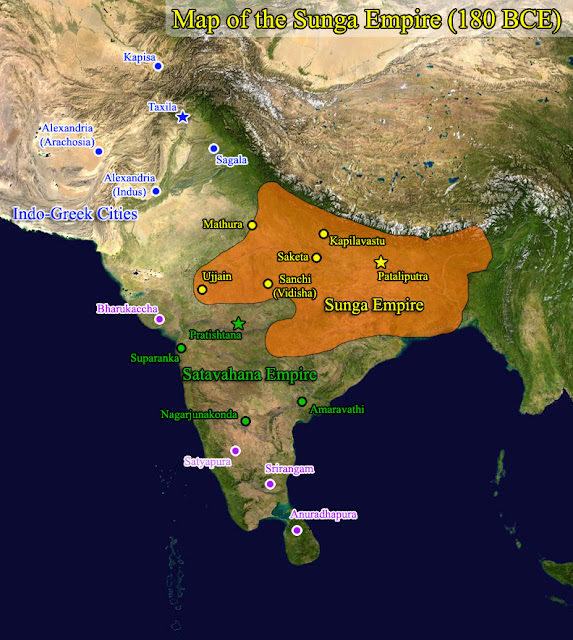Test your knowledge of the Sunga dynasty with our history quiz...
Q.1. The last Mauryan ruler was killed by the founder of the Sunga dynasty. Who was the founder of Sunga Dynasty?
(a) Pushyamitra Sunga
(b) Agnimitra
(c) Vasumitra
(d) Devabhuti
Q.2. Agnimitra was the son of which Sunga king?
(a) Pushyamitra
(b) Devabhuti
(c) Vasumitra
(d) Bhagvata
Q.3. Which of the following rules did not belong to the Sunga dynasty?
(a) Vasumitra
(b) Vasudeva
(c) Bhagvata
(d) Devabhuti
Q.4. How many Ashvamedha or horse-sacrifices was/were performed by Pushyamitra, the founder ruler of Sunga Dynasty?
(a) One
(b) Two
(c) Three
(d) None
Q.5. The last ruler of the Sunga dynasty was killed by Vasudeva Kanva who laid the foundation of Kanva dynasty? Who was he?
(a) Vasumitra
(b) Bhagvata
(c) Devabhuti
(d) Bhagabhadra
Q.6. Greek ambassador Heliodorus visited the court of which Sunga ruler?
(a) Pushyamitra Sunga
(b) Agnimitra
(c) Devabhuti
(d) Bhagabhadra
Q.7. The famed Indian grammarian Patanjali was a contemporary of
(a) Pushyamitra Sunga
(b) Agnimitra
(c) Devabhuti
(d) None of the aboce
Q.8. Who among the following Sunga rulers was the hero of Kalidasa’s drama Malavikagnimitra?
(a) Pushyamitra
(b) Agnimitra
(c) Vasumitra,
(d) Devabhuti
Q.9- Which of the following rulers was not responsible for the expansion of Buddhism?
(a) Asoka
(b) Harshvardhan
(c) Kanishka
(d) Pushyamitra
Answers
1-a
Notes
The founder of the Sunga dynasty was Pushyamitra, a Brahman general of Brihadratha, the last Mauryan emperor.
2- a
Notes
Pushyamitra was succeeded by his son Agnimitra.
3- b
Notes
Pushyamitra was succeeded by his son Agnimitra. Prominent among other rulers belonging to the Shunga dynasty were Vasumitra, Bhagvata and Devabhuti.
4- b
Notes
According to Ayodhya Inscription of Dhandeva, Pushyamitra Sunga performed two Ashwamedha (Horse Sacrifices).
5- c
Notes
Devabhuti (83 to 73 BC) was the last ruler of Sunga dynasty. He was killed by his minister Vasudeva Kanva who established a new dynasty which came to known as Kanva dynasty.
6 – d
Notes
The Besanager inscription records that a Sunga king Bhagabhadra received an ambassador named Heliodorus from a Greek king of Taxila, Antialcidas.
7- a
8 – b
Notes
Agnimitra, the second ruler of the Shunga dynasty, is the hero of Kalidasa’s famous drama Malavikagnimitra.
9 - d
Notes
According to the Buddhist texts, Pushyamitra persecuted the Buddhists. However, these claims are probably exaggerated given the flourishing state of Buddhism during his rule attested by the remains of Bharhut.

Comments
Post a Comment